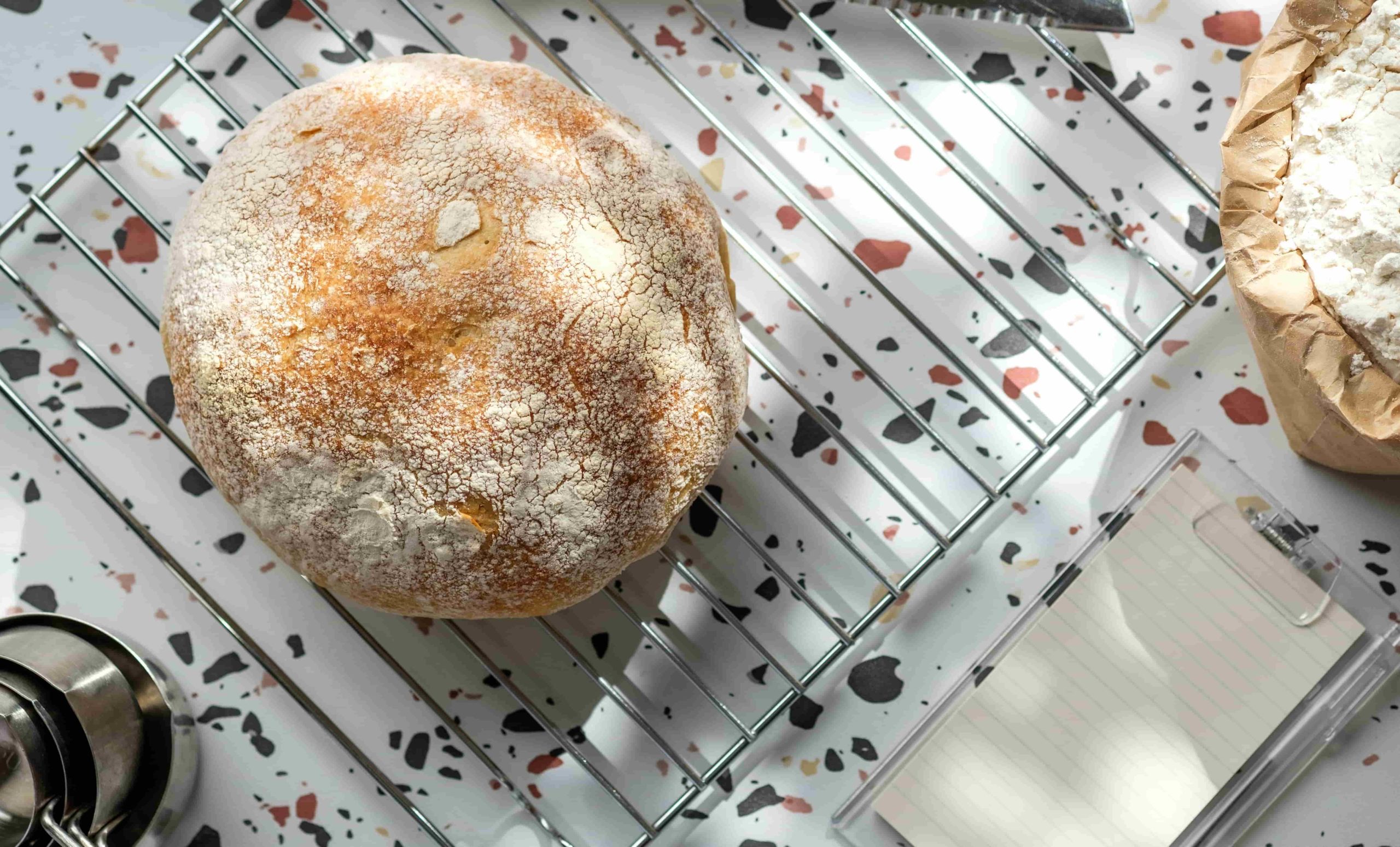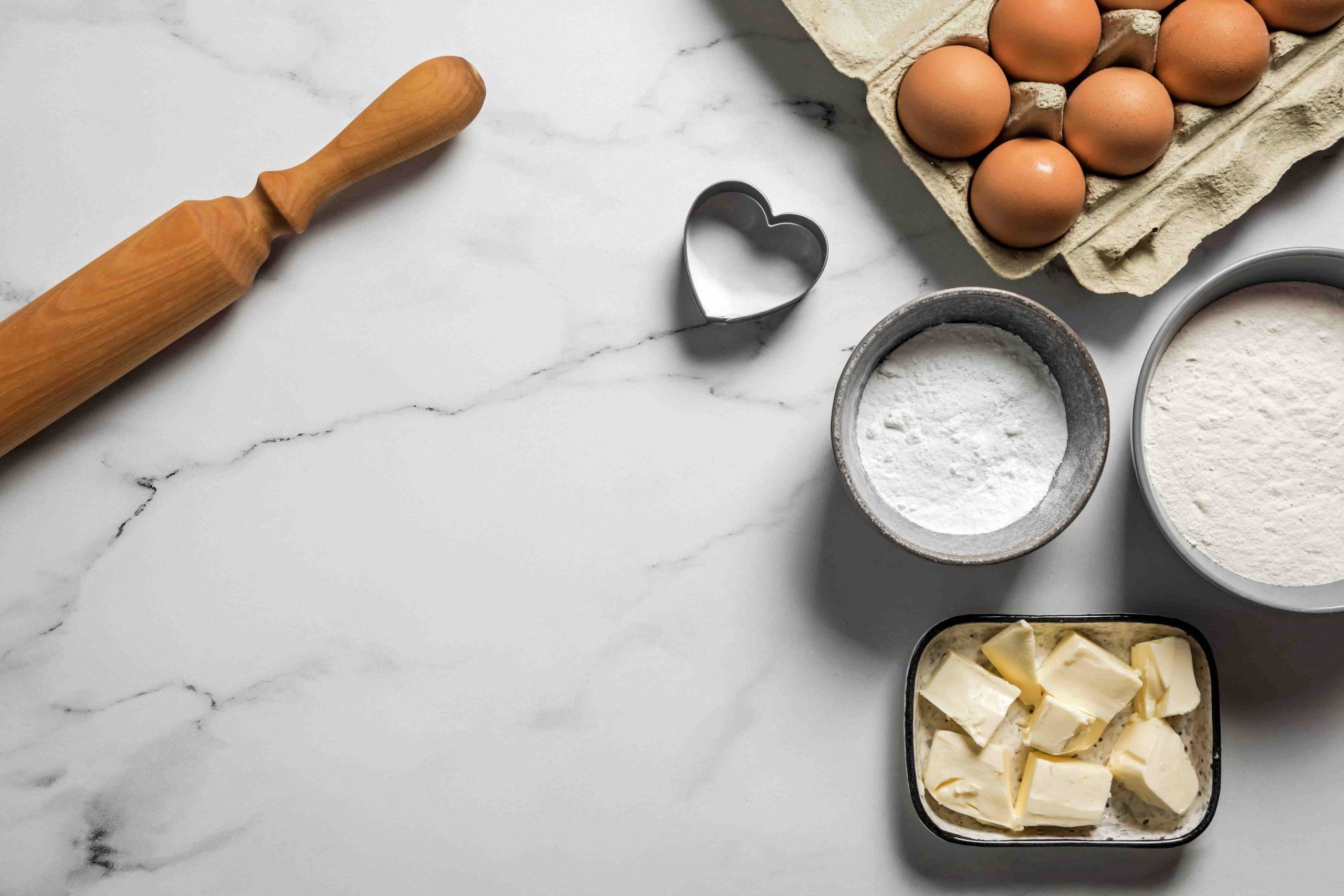When it comes to kitchen countertops, many homeowners consider their options carefully. There are a variety of materials and styles to choose from, each with its own advantages and disadvantages. Two popular materials that come up in the discussion are terrazzo and marble. One option has a hand-crafted appearance that can be customised to suit your design requirements, while the other option features a timeless and elegant natural stone look.
Is the luxurious aesthetic worth the extra cost and upkeep? Will the custom-made design stand the test of time? Today, we will compare terrazzo and marble to help you decide which of the two materials is best for your home.

Terrazzo
Historically, Terrazzo is thought to have been created in the 15th Century in the Friuli region in Italy. Venetian mosaic workers came up with a way to reuse chips of marble to build terraces around their homes. They used goat milk to coat the marble because it brought out the marble’s sheen and rich colours.
Today, this material is created through a process that involves high compressive strength and a vacuum-and-vibration method. This results in a durable material that can withstand heavy machinery and foot traffic. Terrazzo is a composite material made from grinding aggregate (marble, shell, granite, and glass fragments) and mixing them with a binder (cement or epoxy resin) and filler (sand). The mixture is then poured into a mould to harden and then polished for a smooth finish. The material can also be cast as blocks or ready-made tiles for easy installation.
Aurastone uses a modern compacting process with minimal resin, which gives their Terrazzo high resistance to ultraviolet rays, fire, and chemical spills. The vacuum-and-vibration process produces a hardness level of 4 to 6, which makes Aurastone’s terrazzo highly durable when compared to traditional terrazzo.
Terrazzo is a versatile material that can be used for base walls, stair treads, countertops, and other custom products. It is also used in various types of flooring.
There are different types of terrazzo materials: marble terrazzo, granite terrazzo, glass terrazzo, and concrete terrazzo. They are named based on what chips they are made of, but you can also mix and match the chips. The concrete terrazzo is the most affordable material that’s available in different colours, but the only one that cannot be customised.
Below are some features of terrazzo that make it an excellent choice for kitchen countertops:
Eco-friendly
As mentioned earlier, terrazzo was created by using recycled materials, making it an eco-friendly countertop option. It does not have any volatile organic compounds (VOCs), which means that they do not emit chemicals during production. Additionally, it is not a natural stone, so it is considered a renewable resource. Natural materials such as granite and marble do not emit VOCs but are nonrenewable resources that require a lot of energy during their manufacturing process.
Highly Customisable
One of the appeals of terrazzo is its design capabilities. Its unique speckled-looking pattern and colour can be customised by adjusting the colour, size, type, and positioning of the glass and marble fragments, and customising the colour of the cement and resin the chips are mixed with.
Furthermore, terrazzo can be created into a cohesive pattern, so the seams on the solid surface countertops would not be as obvious. Because of this capability, terrazzo is a great material not only for interior design but for art installations as well.
Easy Installation
Terrazzo, being custom-made and starting in liquid form, has the ability to be poured onto nearly any surface without the need to remove the existing surface. It can also be moulded into any form, making the installation process much easier compared to that of marble countertops. They’re also a thinner material, but still a stronger material than marble.
However, there is a risk of cracking when not properly installed and poured terrazzo has a higher risk if the materials in the mixture are not incorporated correctly. It’s important to have a professional install and fix any damages big or small, to ensure your countertop’s longevity.
Durable
Terrazzo is known for its durability, with a lifespan of up to 75 years and low maintenance requirements. Some types of terrazzo are more porous, depending on the material makeup, and may require more maintenance, but most of them only need to be sealed once a year to make them water-resistant.
Terrazzo is a very hard material that can resist scratches, chips, and stains. It’s also heat-resistant and will not get singed or discoloured from placing a hot object on the terrazzo countertop. Terrazzo is also suitable for outdoors because of its resistance to UV rays.

Marble
Marble is a beautiful material that has been used in architecture for over 2000 years, and is even used in art in the form of sculptures, which is why its aesthetic is regarded as timeless and classic to this day. Sculptors from the Renaissance era used marble even though it was rare and expensive because it was durable and weather-resistant, but mainly because its translucency allowed artists to make the sculptures look soft and realistic.
Marble is a metamorphic rock made of carbonate minerals that recrystallize under heat and pressure. The marble is quarried and then cut into slabs before being finished into a countertop material.
Below are some features of marble that make it an ideal choice for kitchen countertops:
Classic Design
Marble possesses a wide range of patterns and natural tones that are unparalleled and cannot be replicated by synthetic materials. It is regarded as a symbol of opulence and refinement due to its exquisite play of reflected sunlight and its ability to impart an air of sophistication and elegance to its surrounding spaces.
Despite it being the more expensive option, it may be worthwhile to invest a bit more in this luxury material. The different tiers are defined by the colour and type of veining in the marble tile. It’s also known as a “living finish” because it changes with age. It may get slightly darker and etchings start to get more uniform. Some people like this organic look because it “gives the marble more personality.”
Long-lasting
According to the National Association of Home Builders (NAHB), natural stones like granite and marble can last more than 100 years. But its longevity depends on how well-maintained the material is.
Marble is porous and not the hardest material and can stain, scratch, and etch easily. It requires frequent sealing to ensure it becomes a long-lasting material. It is a premium option, but it is a great choice for homeowners who are willing to make this investment.
Compared to other countertop materials, it may seem more high-maintenance, but taking care of a marble countertop is not as hard as people think. The most important part is to seal properly with a quality sealant because marble is a natural stone and therefore is porous. Any liquids or foods that spill on unsealed marble can enter the pores of the marble countertop and can turn into a breeding ground for bacteria. Sealing the countertop will prevent this from happening.
Then, it just requires daily cleaning with a soft cloth, mild soap and water. Clean stains up immediately and be careful with sharp, metal objects and heavy objects – unless you don’t mind the patina, which means “the surface appearance of something grown beautiful, especially with age or use”.
Cooling Surface
Marble possesses high density and hardness, enabling efficient heat transfer from a warm object while also facilitating rapid heat dissipation. This makes it a great option for kitchen countertops because it keeps the room cool. It’s especially helpful during baking because its cool surface helps keep the butter in the dough cool, which results in the finished crust of your baked goods being super flaky.
However, it is important to note that it is not recommended to put a hot object directly on top of the marble countertop because although marble is heat-resistant, it’s possible for the sudden temperature change to damage the marble. It can get scratched, discoloured, or cracked if there are any weak spots in the natural stone.
Selecting The Perfect Countertop Material
Ultimately, the material choice for kitchen countertops boils down to personal taste. While both terrazzo and marble offer beauty and strength, they each have their own pros and cons that should be taken into account.
Terrazzo is a popular choice because it’s a durable surface and is great for high-traffic areas.
But with marble, you are paying a little more for its aesthetic qualities. Before making a final decision, it’s best to research both materials and weigh the cost, maintenance requirements, and design possibilities of each to determine which option is best for your needs.
Once you’ve selected your material, it’s important to take care of it no matter how much maintenance is required. Keep them clean using an absorbent cloth, water and a mild, non-abrasive cleaner.
Avoid anything with acidic properties and reseal the countertop as needed. Aurastone does not carry marble, but we do carry terrazzo. Check out Louve for our collection of premium terrazzo stones.


